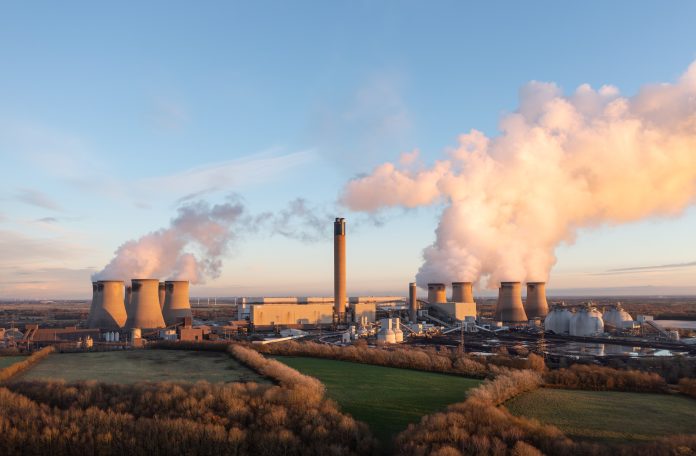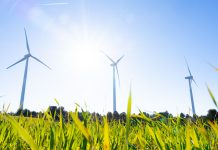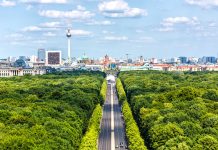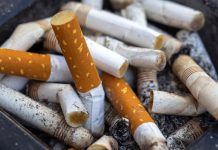Lorna Rothery interviewed Juan J. Castillo-Lugo, Air Quality and Health Regional Advisor at the Pan American Health Organization (PAHO), about the health effects of air pollution and efforts to reduce exposure
What are the most significant sources of air pollution today, and which demographics are most at risk from its effects?
Air pollution is mainly caused by the way we develop and approach energy usage, particularly with the burning of fossil fuels and the use of polluting energy in homes.
Among the main sources of air pollution are the transportation sector, industrial activities, and coal-fired power plants. In densely populated urban areas like those found in Latin America, the concentration of vehicles using fossil fuels contributes significantly to air pollution, and as a result, the vehicle fleet becomes the largest emission source in these areas.
Industries that rely on oil or gas for energy production are significant sources of emissions. Non-combustion sources, such as erosion or suspended particles from roads or eroded areas, also contribute to particulate matter in the air. Alongside particulate matter, there are also other pollutants like volatile organic compounds (VOCs) from sources such as vehicle emissions and industrial processes.
The practice of biomass burning for cooking and heating, particularly in the Americas, is another significant contributor to air pollution, posing a threat to vulnerable groups. Smoke from biomass burning is linked to cardiovascular and respiratory diseases. Nearly 72 million people in the Americas still rely on polluting fuels to meet their cooking needs. Urgent measures to eliminate biomass cooking and reduce exposure are crucial for the immediate and long-term wellbeing of the public.
Polluting fuels in the household is one of the environmental risk factors addressed in the Pan American Health Organization’s (PAHO) Elimination Initiative, which aims to eliminate more than 30 communicable diseases and related conditions by 2030.
Those living near pollution sources, such as highways or busy roads, or those relying on biomass burning, by having increased exposure to pollutants are most affected by air pollution. Vulnerable populations, including children, older adults, pregnant women, and individuals with existing respiratory or cardiovascular conditions, are particularly susceptible to its health impacts.
Can you explain some of the health effects associated with air pollution, including prolonged exposure to low levels?
Approximately seven million people die every year due to exposure to air pollutants. Specifically, there are five risk factors linked to mortality during exposure to pollutants: COPD, stroke, respiratory illnesses, lung cancer, and ischemic heart disease. These are the most significant known effects of air pollution, but there are also other effects like skin irritation and coughing. Recent evidence also suggests a link between air pollution and diseases such as diabetes, dementia, mental health issues, and respiratory problems. Unlike water pollution, where the population usually has the ability to choose not to drink polluted water, we have limited options to avoid breathing polluted air. Every breath exposes us to pollutants, and even low concentrations can have health effects. According to the World Health Organization, there is no safe level of exposure to air pollutants. In other words, there is no threshold below which we can say that air pollution will not cause health effects. We are still trying to understand the full extent of the health effects of air pollution, including the effects of low or ultra-low concentrations.
Controlling industrial emissions is important, but we need to implement more integrated approaches to promote health and wellbeing. Urban planning plays a crucial role in this; it’s important to prioritize the health of the population by promoting active mobility and green urban spaces and creating low-emission areas.
Has the pandemic increased awareness of the impact of the environment on our health, particularly indoor air quality?
After the pandemic, we re-evaluated our approach to indoor air quality. Previously, we mainly focused on particles when discussing indoor air quality. However, the issue of ventilation has now become central to our work. The pandemic led us to question the quality of the air we breathe and how it transports pollutants and viruses. As a result, we are making significant efforts to improve indoor air quality in residential and commercial buildings, as well as healthcare facilities. There has been more progress in healthcare facilities, and efforts to prevent cross-contamination have been ongoing. The overall idea is to create a better environment within our homes, especially now with multifamily and office buildings where we all share the same air. This is also true for healthcare facilities were innocuity is key to protect the health of patients, caregivers and workers. The pandemic has heightened awareness of this interconnectedness, prompting better technical cooperation in this area.
Building more energy-efficient houses with improved ventilation can help prevent symptoms associated with ‘sick building syndrome.’ When air pollution reaches high concentrations, especially due to events like wildfires, it’s important for vulnerable populations to stay indoors and limit physical outdoor activities. Early warning systems and communication from health providers can help people take necessary precautions during air pollution contingencies.
Wildfires represent a modern source of air pollution. How can we regulate for unpredictable climate-related events like this?
It is a very challenging topic. Planning, emergency response, and agricultural departments have fire management plans to control fires and prevent larger ones. They may use technology, drones, and other approaches for controlled fires.
We can plan for more controlled fires and improve weather monitoring systems to be better prepared for higher temperatures. From the health sector perspective, we need to ensure that no one is left behind. We need to develop robust early warning systems that can trigger a timely response in affected areas. Wildfires impact urban air quality but also affect indigenous and rural communities. We need to ensure that local communities, including Indigenous and rural populations, are also protected and supported by the health sector and receive reliable primary care services, especially during those episodes
How do the measures to reduce exposure to pollution tie into the work being done on the Sustainable Development Goals?
The Sustainable Development Goals (SDGs) focus on various aspects, including health, environment, energy access, and poverty eradication. Clean energy access and air pollution are directly linked to several SDGs. For instance, SDG 7 addresses clean energy access, while SDG 11 focuses on health and wellbeing, with an indicator related to air pollution. Additionally, SDG 3 includes an indicator regarding the health impacts of air pollution.
Furthermore, access to clean energy is crucial in addressing poverty and hunger. Many people, especially women, spend significant time and effort on cooking using biomass burning, which hinders their ability to pursue other opportunities. Gender equality is also affected, as women often bear the primary responsibility for household cooking. That is why PAHO has included the elimination of biomass burning as one of the goals of the PAHO Disease Elimination Initiative, an ambitious program to eliminate over 30 diseases and risk factors in the Americas.
In essence, addressing air quality is central to achieving several SDGs, as it contributes to better living conditions, gender equality, and sustainable production. Moreover, air pollution can contaminate water sources, highlighting the interconnectedness of environmental and social issues.
Our department, now named the Department of Social and Environmental Determinants for Health Equity, aims to comprehensively understand and address these interconnected challenges to improve health outcomes and learn how to deliver better health for people.











